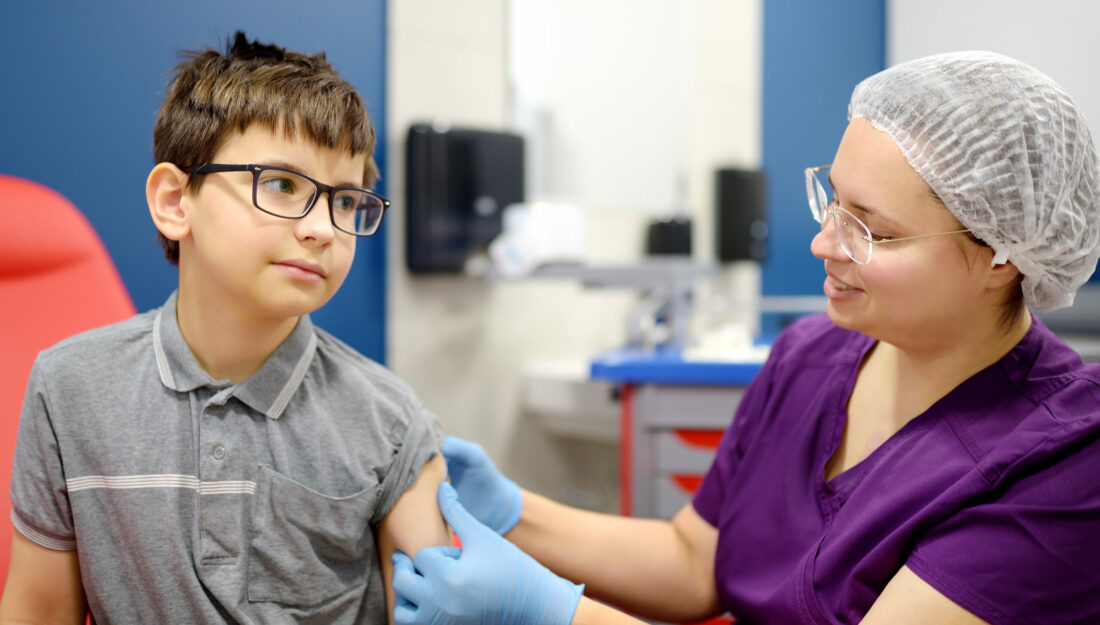- Ann Kellett, PhD
- Public Health, Research, Show on VR homepage
School-based clinics have improved health equity—but they reach only a small number of students
Public health researchers gauge broad national support to help inform potential strategies to improve access to care among U.S. children and adolescents

Students are very satisfied with school-based health centers, but little has been known until now about the public’s opinions. (Stock image)
School-based health centers (SBHCs) are clinics located in or near public schools to provide students with convenient health care. What began as three clinics in three states a half-century ago has grown into a network of more than 2,500 SBHCs serving more than 6.3 million students in 48 states and Washington, D.C.
Despite this growth, they still serve only a small portion of the nation’s 59 million public school students. In addition, they continue to provide a relatively limited number of services, even though these have expanded beyond primary care to commonly also include preventive health services and services related to behavioral health, oral health and reproductive health.
Although those who use SBHCs are very satisfied with the services provided, little has been known to date about the public’s overall perceptions of SBHCs—perceptions that could have major implications for the future of SBHCs.
To fill this gap, Simon F. Haeder, PhD, and Daniel Marthey, PhD, both from the Department of Health Policy & Management at the Texas A&M University School of Public Health, along with a colleague from Ohio University, asked more than 4,000 adults in the United States for their opinions regarding seven common health services provided in public schools: primary care, preventive care, vaccinations, preventive dental care, preventive vision care, mental health care and nutrition counseling.
The study, funded by the Robert Wood Johnson Foundation, was published in the Journal of School Health. It follows Haeder’s and Marthey’s other recent work published in the journal Contraception that focused specifically on reproductive health services.
“Previous research clearly shows that SBHCs increase access to health care and health education—including mental health care—and that these benefits might also lead to increased school attendance, higher grades and lower high school dropout rates,” Haeder said. “But these centers have also been controversial from the beginning.”
Haeder said the controversy stems primarily from the provision of reproductive health services and to a lesser degree, perceived encroachment on parental rights, disruption of the educational mission and paternalism.
“We sought to determine not just the level of broad public support for SBHC services, but also the characteristics that might predict the level of support or opposition to specific services SBHCs typically provide,” Haeder said. “These findings could support efforts to improve access to health care among school-aged children.”
After gathering demographic data from the 4,196 respondents, the researchers asked respondents about their general attitudes about school-based health centers, with questions such as, “Do you think it is appropriate or inappropriate forschools to allow these school-based health centers to operate on school grounds?” The researchers used t-tests and weighted linear regression models to compile and analyze the results.
“We found that the public overwhelmingly supports SBHCs in broad terms and also for the specific services that they typically provide,” Marthey said.
More than 3 in 4 respondents supported the provision of all of the seven health care services covered in the study, with a mean of 81.1 percent either “probably” or “definitely” supporting SBHC services. Support among parents of underaged children was higher than for the overall sample.
Nutritional counseling received the most support (89.2 percent “probably yes” or “definitely yes”), followed by preventive vision care (87 percent), mental health services (83.6 percent), preventive care (80.9 percent), primary care (78 percent), preventive dental care (75 percent) and, finally, vaccination services (72.5 percent).
“The relative lack of support for vaccination services reflects the current controversy on this issue, but still, support for vaccination services was exceedingly high,” Marthey said.
In addition, the study found consistent associations for trust in school principals. Women tended to be more supportive of SBHC services than men, except on the topic of vaccinations, where no difference was found. Parents of underaged children were more supportive than others.
Urban respondents were more supportive than suburban respondents in all areas except preventive care and mental health services, and rural respondents were the least supportive in this category. Those with liberal political views expressed the most support, followed by moderates and conservatives. Political differences were particularly large on the topic of vaccinations.
“This broad support indicates that increasing knowledge about SBHCs and providing stable funding for them should be priorities for policymakers, health care providers and other stakeholders,” Haeder said.
Media contact: media@tamu.edu


